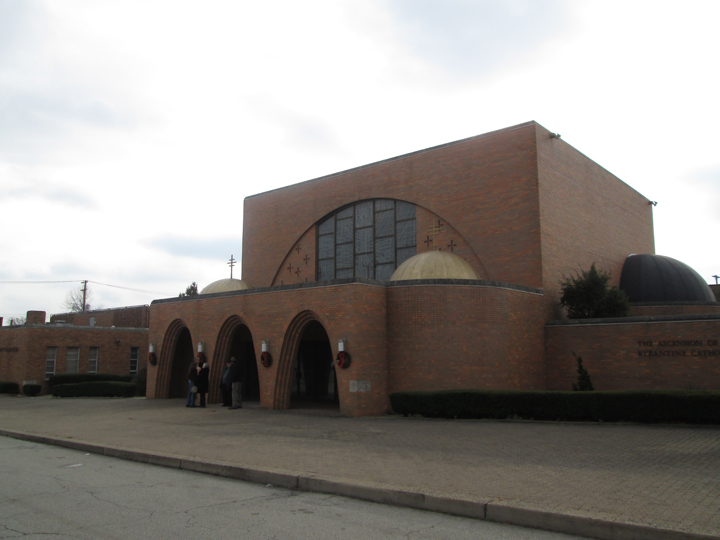The Ascension of Our Lord Byzantine Catholic Church was founded in 1907 in the bustling new industrial town of Clairton by Ruthenian immigrants from the Carpathian Mountains of the AustroHungarian Dual Monarchy, specifically, from the Kingdoms of Hungary and Galicia. These Ruthenians, also called CarpathoRussians, spoke mostly East Slavic dialects and were Greek Catholics: They worshiped according to the Greek or Byzantine rite, followed the Julian Calendar and used the Cyrillic alphabet, but they were under the Pope of Rome. As their language of liturgy and scripture, they used Church Slavonic. For literary purposes they employed a Ruthenian recension of literary Russian. The Ruthenians are noted for a large repertoire of semifolkloric religious hymns. Often set to hauntingly beautiful melodies, these are still sung before or after Divine Liturgy or during the communion of the faithful. 
 The original church was dedicated by Bishop Soter Ortynsky on October 6, 1907. The first pastor was Rev. Cornelius Laurisin. Under Rev. Irenaeus Matyaczko (1908-1922) a rectory was built and property for a cemetery was purchased. The church was appointed according to the canonical norms of the Byzantine rite. The impressive five-tier iconostasis was blessed by Bishop Ortynsky in 1909. From 1925-1931 the church was closed.
The original church was dedicated by Bishop Soter Ortynsky on October 6, 1907. The first pastor was Rev. Cornelius Laurisin. Under Rev. Irenaeus Matyaczko (1908-1922) a rectory was built and property for a cemetery was purchased. The church was appointed according to the canonical norms of the Byzantine rite. The impressive five-tier iconostasis was blessed by Bishop Ortynsky in 1909. From 1925-1931 the church was closed.
The parish was restored under Rev. Michael Rapach (1931-1950). Faithful parishioners cooperated in eliminating parish debts. A house was bought as a convent for the Sisters of St. Basil the Great, who taught religion to the children. Parish organizations were revitalized or founded anew. These included a Holy Name Society, Rosary Society, Altar Society, Sodality and Choir. Under Rev. Andrew Dzmura (1950-1959) the Confraternity of Christian Doctrine of religious education teachers was formed, and many men of the parish joined the Knights of Columbus. A marble altar and tabernacle — gifts of the Altar and Holy Name Societies — were installed. Msgr. Michael Hrebin (1959-1995) launched a vast building project. In 1964 an elegant banquet hall was erected on the corner of Park Avenue and Third Street. The superior catering of parish volunteers made possible the construction of an impressive new church on the site of the 1907 church. The church and a modern rectory — connected to the church by a covered walkway and cloistered courtyard — were dedicated in 1981 and 1983 respectively. An enormous marble baldachin and two mosaic shrines arrived from Italy in 1985. In 1989 the parish celebrated the burning of the mortgage. 
 In 1998, the year after the arrival of Rev. Ivan Mina, Ph.D., a marble iconostasis was purchased from Italy, and the church was adorned with extensive iconography, arranged according to Byzantine canons. These icons were written by noted San Diego iconographer Mila Mina. In 2007 the church celebrated its centenary. Today, the parish boasts an active Holy Name Society and GCU Representative, which together coordinate the annual parish picnic and fundraisers. The religious education teachers organize classes and activities for the children of the parish.
In 1998, the year after the arrival of Rev. Ivan Mina, Ph.D., a marble iconostasis was purchased from Italy, and the church was adorned with extensive iconography, arranged according to Byzantine canons. These icons were written by noted San Diego iconographer Mila Mina. In 2007 the church celebrated its centenary. Today, the parish boasts an active Holy Name Society and GCU Representative, which together coordinate the annual parish picnic and fundraisers. The religious education teachers organize classes and activities for the children of the parish.